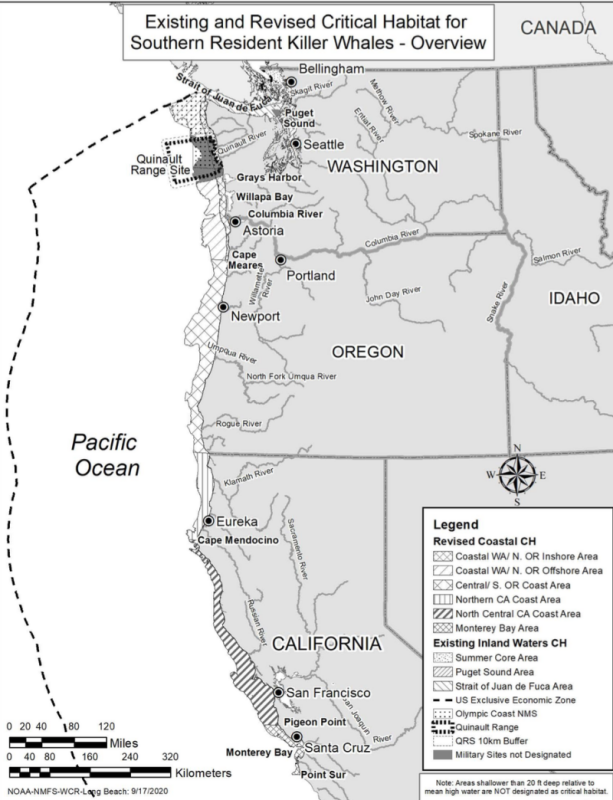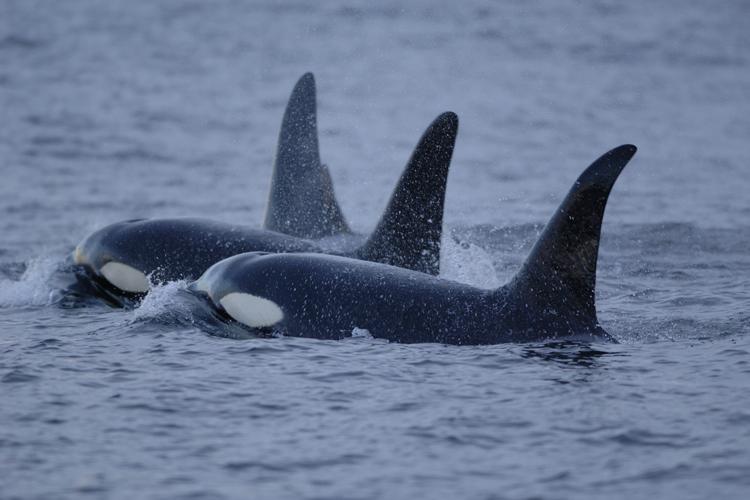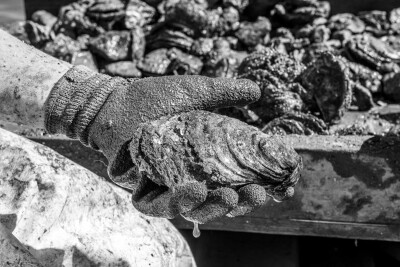The Biden administration extended critical habitat designations for the highly endangered Southern Resident orca population, to cover nearly 16,000 square miles of Pacific waters from Washington south to Point Sur, Calif.
The whales currently have had critical habitat protected in the inland waters of Washington state, where the Southern orca population of just 75 animals is highly dependent on chinook salmon – stocks that themselves are in danger from habitat loss and pollution in the region.
A final order from NMFS, published in the Aug. 2 Federal Register and taking effect Sept.1, maintains the Puget Sound protected region and extends the critical habitat designation out to the 200-meter (656-foot) sea floor contour.
“This revision is based on over a decade of research that improved our knowledge of Southern Resident killer whales’ geographic range, diet, and habitat needs, including their movements up and down the West Coast,” according to a NMFS announcement.
The new area covers 15,910 square miles off Washington, Oregon, and California from the U.S. international border with Canada south to Point Sur. One exception is for the Navy’s activities in the Olympic Coast National Marine Sanctuary, where NMFS is maintaining exclusion of the Quinault Range Site, but with modifications to maintain more of a 10-kilometer (6.2-mile) buffer around the range area.
During a lengthy public comment period the agency heard from groups and individuals with a wide range of positions – from contending the rule does not do enough to protect the whales, to worries that habitat designation would impose new burdens on maritime and fishing industries.
“Designation of critical habitat does not establish a refuge or sanctuary for the species or automatically close areas to specific activities, but rather it guides Federal agencies to consult with NMFS if their actions may affect critical habitat,” agency officials wrote. “In the case of commercial fisheries…we consider it unlikely that the designation of critical habitat would result in different fishery management measures than would already be implemented for the protection of Southern Resident killer whales, endangered salmon, and other listed species.”
The rule grew out of a 2014 petition to NMFS from the Center for Biological Diversity seeking revisions to the critical habitat designation to include “inhabited marine waters along the West Coast of the United States that constitute essential foraging and wintering areas,” specifically the region between Cape Flattery, Washington, and Point Reyes, California, extending from the coast to a distance of 47.2 mi (76 km) offshore.
NMFS undertook a study toward a new rule, and in August 2018 the Center for Biological Diversity sued the agency in federal court to expedite rulemaking and set a deadline. An April 2019 settlement required NMFS to complete and submit a proposed rule later that year.
“This decision to expand critical habitat is a major step forward toward recovering these iconic orcas,” said Ben Enticknap, a senior scientist with the environmental group Oceana. “We have a responsibility to protect and recover Southern Resident orcas and this announcement will help make sure that happens.”








